摘要:
To get a comprehensive source apportionment of the non-refractory submicron aerosol (NR-PM,), a merged dataset of the organic fragments and the inorganic species, measured by an aerosol chemical speciation monitor (ACSM) during winter 2014 in Shijiazhuang, was used as input for positive matrix factorization (PMF) analysis using the multilinear engine (ME-2) algorithm. Four primary factors were resolved by constraining the profiles of the previously separated organic factors, while three unconstrained secondary factors were resolved. Secondary factors (sum of organic and inorganic components) accounted for over half of NR-PM, during normal days (NDs, 58% or 105.7 mu g m(-3)) and Chinese New Year (CNY, 79% or 72.6 mu g m(-3)). Among the organic components of the total secondary aerosol, 38-48% (8.0-14.4 mu g m(-3)) of the oxygenated organic aerosol (OOA) was attributed to the nitrate-rich OOA (i.e., OOA-NO3) factor, indicating that a part of the OOA was freshly formed and/or had similar volatility as nitrate. In comparison, a portion of 25-26% (5.5-7.7 mu g m(-3)) of the OOA was attributed to the regionally transported sulfate-rich OOA (i.e., OOA-SO4) while 26-37% (7.3-7.4 mu g m(-3)) of the OOA to aged primary aerosol. The positive relationship between OOA-SO4 and aerosol liquid water content (ALWC) in the same air mass suggested an aqueous-phase reaction pathway, which produced nearly half as much OOA as sulfate (12.0-17.0 mu g m(-3)), while photochemical reactions could produce similar amounts of OOA as nitrate (8.6-15.4 mu g m(-3)), as indicated by the positive relationship between OOA-NO3 and O-x (O-3 + NO2). During CNY, the NR-PM, concentrations (91.9 mu g m(-3)) were reduced by similar to 50% when compared to the nonholiday periods (182.7 mu g m(-3)). This reduction was primarily due to the reduced anthropogenic activities, resulting in a 65-89% reduction in the primary emissions from traffic, cooking, biomass burning, and coal combustion, as well as a 1-44% reduction in secondary factors. The results in our study have significant implications for controlling primary emissions, while joint measures over a regional scale are needed to reduce the secondary aerosols in Shijiazhuang.附注:
Lin, Chunshui Huang, Ru-Jin Xu, Wei Duan, Jing Zheng, Yan Chen, Qi Hu, Weiwei Li, Yongjie Ni, Haiyan Wu, Yunfei Zhang, Renjian Cao, Junji O'Dowd, ColinLI, Yongjie/D-2856-2009; Huang, Ru-Jin/K-5022-2018LI, Yongjie/0000-0002-7631-9136; Huang, Ru-Jin/0000-0002-4907-9616